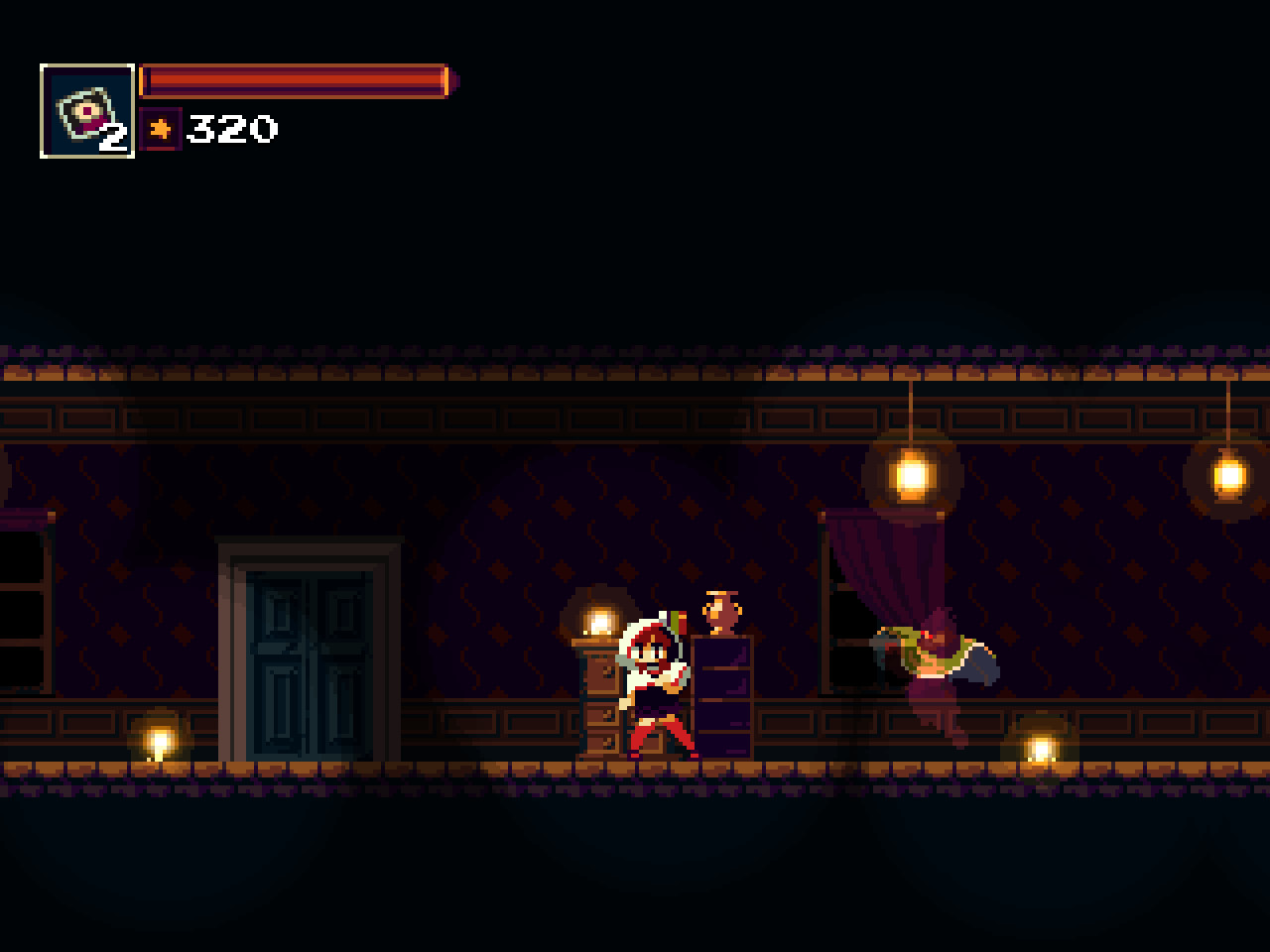

The Heroine: Isadora in the first game, Momo in the second, both of them in the third and then Kaho in the fourth. Heroic Mime: Neither of the protagonists speak, though Momo apparently communicates with the other girls in the caves just fine anyway. The fourth game replaced them with "Vitality Fragment" floating hearts. Heart Container: The love letter items seen in the second game. They're healing crystals in the first game, but change to prayer bells in the later ones. The Ring of Candor helps immensely with these, as it chimes (and vibrates the controller if one with a rumble feature is used) upon entering a room with a secret passageway or item. The Ivory Bugs sidequest also requires much exploration and a bit of pixel hunting. A couple of hidden rooms in the fourth game are easy to miss, even though unvisited paths are actually visible on the map. A notable one is the 2YO Doll: the way to obtain it is accessed within the game's data folder. Some treasures in the first game are notoriously hard to find. I and III, which are more linear, have straightforward plots (venture into the caves of the Underworld Queen Lamia to resurrect Isadora's mother, and defeat the Death Goddess Rell to save Dora's village, respectively), while II and Reverie, which are metroidvanias, have more involved plots. In Reverie, you get to help Cath fight the Heretical Arsonist. She occasionally attacks from afar with arrows. You have Kaho's support while fighting Haegok in III. The fourth gives them realistic proportions, better representing the intended size differences between them and recurring enemy creatures. Graphics-Induced Super-Deformed: The first three games have chibi human characters. However, because bosses drop unique and very powerful items assuming you did not lose any health beating them, purposely letting enemies batter you down until your health is low, or deliberately sacrificing your health with the Tainted Missive, and then engaging the boss with the damage boost is a viable strategy. Given the game's higher difficulty, fighting like this is more of a last-ditch effort than in the previous game. In Reverie, the Necklace of Sacrifice doubles attack power at low HP. Combined with the Dream Ring, it makes a joke out of every boss. The Ceremonial Fabric in III multiplies your power by 4 when you have 2 hearts or less. And a few equipments can play this trope further in: Glass Cannon: Were you really expecting little girls and priestesses to tank? But don't worry, they can dish out all they can take with interest. Gelatinous Trampoline: The round ones in III have faces. Freeware Games: The first two games are freeware. The little rock-throwing guys seen in all games are named Bakman. Faceless Eye: A lot of enemy designs, especially in the first game. The locked room marked with question marks in Reverie is one. In II, one is accessible upon starting a New Game+. Crapsaccharine World: For a world with lots of cute girls, there are an awfully large number of demonic invasions and curses tainting the land. Character Title: Momodora's heroines are named Momo and Isa dora. Action Girl: Both Isadora and Momo can slice apart dozens of enemies with just a leaf. Momodora embraces many of the things that make Bloodborne so unique - the foreboding atmosphere, the multiple branching pathways with shortcuts that make subsequent trips easier to navigate, and a hell of a dodge roll - but twists them just enough, combining these elements with its detailed pixel art and lush animations to make them its own. This is the point where I drag out the cliche that Momodora is like the Dark Souls or Bloodborne of non-linear sidescrolling platformers, but it's a description that's absolutely apt here - and not just because of its difficulty. MOMODORA REVERIE UNDER THE MOONLIGHT QUEEN HOW TO
Momodora will beat you down, but you will keep returning, each new attempt strengthening your resolve and teaching you how to overcome its challenges

Enemies can do massive damage with one or two hits, and your only way to regenerate health is a handful of bellflower petals that only return when you activate a save point, which get further and further apart as you progress.

Within the first few moments of hitting Start and arriving in this haunted, pixelated land, you're probably - no, definitely - going to die. Let's get this out of the way up front: Momodora: Reverie Under the Moonlight is hard. Navigating maze-like hallways brooding, demonic terror dying a lot







 0 kommentar(er)
0 kommentar(er)
